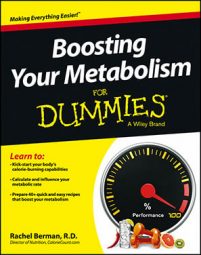The first step to making your kitchen your healthy eating sanctuary is to remove the foods that are problematic. These are the foods that clog up the space in your pantry and slow your weight loss progress, or the foods that result in overeating.
What's "problematic" for you may not be for your family member or friend — everyone is different. Some people are blessed with the ability to keep a carton of ice cream in their freezer and scoop out only one serving at a time.
Removing problematic foods from your kitchen is the first step to breaking your unhealthy relationship with that food. If you truly enjoy this food, it's really not practical that you'll never eat it again. So you have to re-learn when and how you'll consume it. That sure isn't easy when it's in your home calling your name after a long day at work.
Cleansing your kitchen
When you're trying to improve your diet, you have to make sure healthy foods are front and center for you to choose in your kitchen. Otherwise, your kitchen may be sabotaging your efforts if grabbing that bag of chips or having a pint of ice cream is the easiest option for you. Having a clean, organized kitchen also makes cooking a much more pleasant and doable experience. Here's how to get started:
Start with two trash bags: In one go any un-expired foods that you can donate to a soup kitchen. In the second goes all the food you want to toss in the garbage.
Start tossing: Take everything out of your cupboards and refrigerator and trash the following: The foods that are expired, the spices that have been there longer than a year, your "problematic" items (you probably know what those are), and food imposters.
Clean: Clean out your cupboards and refrigerator with a washcloth to start fresh.
Reorganize: Group all the foods together that you're keeping in one area, such as grains, spices, oils, fruits, vegetables, and dairy, so they're easy to find in a pinch.
Have a roommate unwilling to give up her cookie jar? Or what if you must have foods around that tempt you because your family member won't give them up? In that case, create a separate area for those foods that's harder to reach, literally. Put them either on a higher shelf or in the back of a cabinet so that you have an actual barrier between you and the foods that tempt you.
Understanding the good and bad about canned food
There are a lot of myths around canned food: that they're not as nutritious as fresh, that they contain tons of preservatives so they never go bad, or that canned food is highly processed. When you're searching for a quick meal or stocking up for the end of the world, keep in mind the good, bad, and ugly of what canned foods can offer you.
The good
Canning uses natural heat methods and doesn't require the addition of chemical preservatives.
Canning preserves food in an air-tight container (for up to two years) so they're often stored for use in emergency situations.
Fruits and vegetables are canned close to harvest and don't lose nutrients in handling and transport like fresh produce. Therefore, fiber, vitamins, and minerals are often better retained in canned food. For example, canned pumpkin has three times more vitamin A than fresh, and the heating process makes lycopene in canned tomatoes more readily available.
Canned foods offer up quick and easy meal options such as soups, beans, fish, fruits, veggies. Often foods are cooked, cut up, or sliced for convenience, which saves time.
Canned foods are cheaper, and you can stock up when they're on the sale to get valuable nutrients on a budget.
The bad
Sodium is added to many canned foods for taste, and rinsing will only slightly lower sodium content.
There is increasing concern about Bisphenol-A (BPA), a chemical found in the can's lining to help preserve quality and color. It's also prevalent in plastic containers and has been linked to health problems in animals.
The ugly
Botulism is a rare but fatal food-borne illness caused by the toxin Clostridium botulinium, which can grow in improperly canned foods. It occurs mostly in home-canning, with foods that have low acidity such as corn, green beans, and asparagus.
Replacing your jumbo/sugary/salty foods
You can really insert any adjective into the phrase to describe the food that's problematic for you. Make a list of the foods that you've decided to clean from your kitchen and then make a second column showing the food you can replace when you toss those foods away. It's all about replacing those foods with more nutritious items so your kitchen fosters your healthy diet. The following table offers up ideas for what to toss and what to stock as a replacement.
| If you're tossing | Stock up on |
|---|---|
| Potato chips, pretzels, salted nuts | Air-popped popcorn or unsalted nuts |
| Sugary cereals | Whole grain cereal and oatmeal |
| Soda | Seltzer and naturally flavored water |
| Sugar-free puddings or ices | Plain or naturally flavored yogurt |
| Ice cream | 100 percent frozen fruit bars |
| Canned beans | Dried beans |
| Salad dressings | Extra virgin olive oil and balsamic vinegar |
| Commercial chocolate bars | Dark chocolate, raw, 1-ounce serving packs |
| Canned vegetables, meat, fish | Frozen or fresh varieties |
| Artificial sweetener packets | Stevia packets |
These are suggestions, and you may be able to find suitable alternates with the plethora of items hitting the grocery stores shelves. Take time to look around on your next visit.

